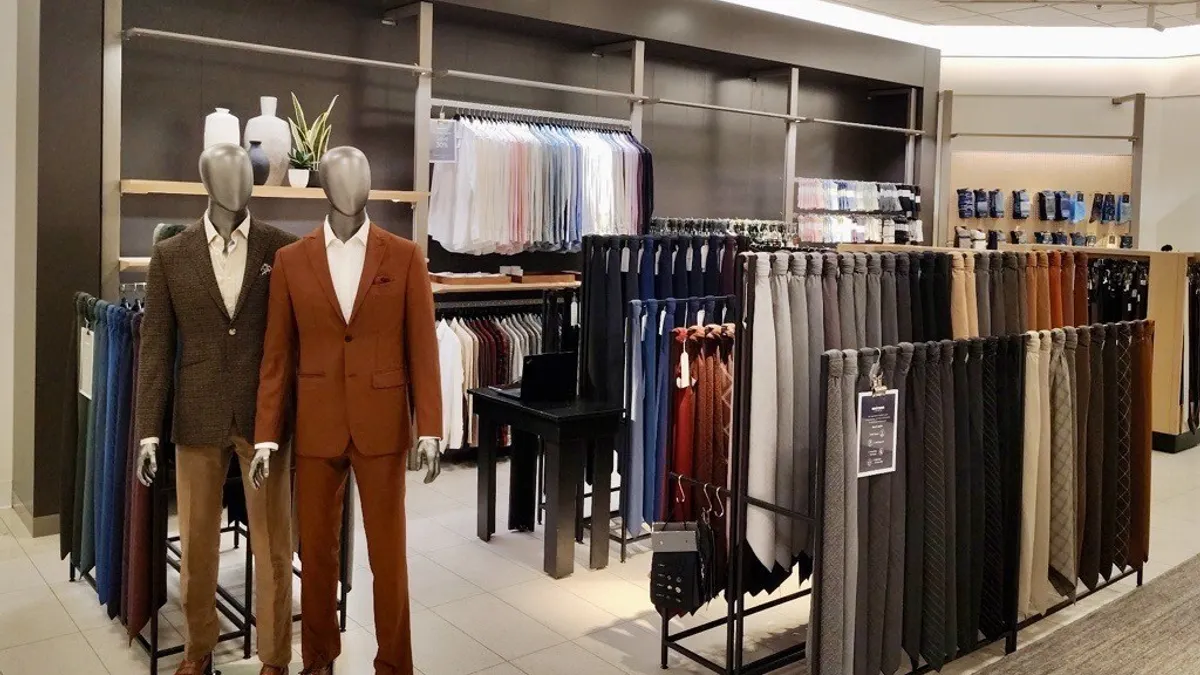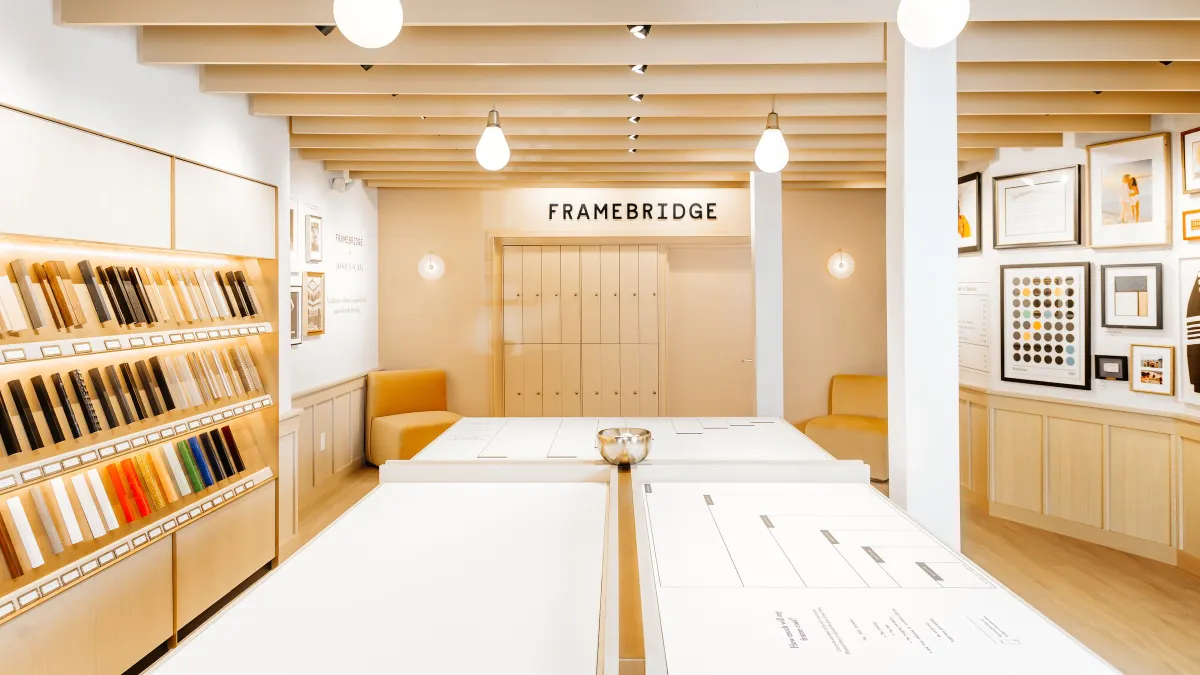The pandemic rattled most aspects of the industry — consumer demand surges, supply strains, widespread store closures — but it also accelerated some trends analysts were already projecting, notably the increased adoption of e-commerce.
Due to most nonessential stores closing in mid-March and consumers being advised to limit encounters in crowded places, shopping online became more popular than ever.
"We saw a tremendous surge in digital for the first three quarters of this year," said Rob Garf, vice president of strategy and insights in Salesforce's Retail & Consumer Goods practice. But even as physical stores began reopening, Garf noted that e-commerce sales in the second and third quarter increased 71% and 55%, respectively, year over year.
In a year where nearly every category the commerce department tracks in its monthly retail sales reports is down, e-commerce and other non-store sales have steadily been outperforming others since March.
But while the influx in digital orders helped offset store sales declines, it introduced other problems, particularly around shipping delays. Even Amazon experienced disruptions that caused it to walk back its one-day delivery promise, limit its assortment and postpone its annual Prime Day event.
"Retailers have been forced to get really scrappy with their digital operations to ensure that the products aren't just ordered but they're actually getting to the doorstep," Garf said.
Now, well into the holiday season, online order volume doesn't appear to be subsiding. According to a survey from Salesforce, 47% of consumers are more interested in shopping online this year than last holiday season. And eMarketer predicts online holiday sales will increase 35.8% year over year to reach $190.47 billion.
Retailers have had eight months to prepare for the all-important holiday season that's sure to look unlike any other.
"I really feel like shipping will define the winners and losers this holiday season," Garf said. "You don't want to be the retailer in the headline talking about the 'Grinch Who Stole Christmas' because they couldn't get the product to the consumer. There's a lot of strain on the supply chain."
Shipping delays expected
Preparing for a flood of online orders, retailers and carriers alike have had to increase staffing for the holiday season.
Target and Walmart, among others, have ramped up seasonal hiring to support their e-commerce and logistical operations. UPS announced in September it would hire 100,000 seasonal workers for peak season, while FedEx said it planned to add more than 70,000 positions to prepare for the season.
Carriers, to accommodate for the demand surges, have also made clear cutoff dates for when orders need to be placed to be received in time for the holidays.
The U.S. Postal Service set a Dec. 15 deadline for its Retail Ground Service and a Dec. 18 deadline for its First-Class Mail Service for packages to arrive in the contiguous United States before Dec. 25. UPS similarly said orders needed to be placed by Dec. 15 for its Ground service and Dec. 21 for its 3 Day Select service for parcels to arrive by the holidays. And FedEx set Dec. 15 deadlines for its Home Delivery and Ground services, and Dec. 22 for its 2 Day service for orders to arrive by Dec. 25.
Garf suggests that retailers and brands also need to do their part in making it abundantly clear to the consumer these cutoff dates so as to not lead to disappointment if gifts don't arrive in time.
And even while the typical holiday shopping season is longer with Thanksgiving falling on Nov. 26 — adding two additional calendars days between the holiday and Christmas compared to last year — Joe McCarthy, director of performance marketing at Klaviyo, said the holiday season has actually contracted, at least when it comes to buying goods online. "We're losing more days because of those cutoffs," he said. "What it means, most likely, is brands are going to start pushing sales earlier to try to get consumers to purchase earlier."
The retail giants already unofficially kicked off the holiday season mid-October with major sales events. Amazon, which historically has held its annual Prime Day in July, postponed it to Oct. 13-14. Other retailers, including Walmart, Target and Best Buy, followed suit in announcing deal days around the same time.
Those retailers have announced plans to continue the Black Friday-like deals throughout the remainder of the holiday season in an attempt to spread out demand.
"They're doing a month-long Black Friday and Cyber Monday, trying to get those sales in and trying to alleviate having angry customers on the back end not receiving their shipments," McCarthy said.
BOPIS has become a necessity
While retailers are launching sales events earlier than ever this year and spreading the deals throughout the season, there are some consumers that will inevitably wait to buy gifts. Retailers using stores for online fulfillment can help cater to those last-minute shoppers to ensure gifts make it into consumers' hands in time.
"We definitely think that curbside pickup is going to be huge this year," McCarthy said. "While e-commerce will be big, I really am interested to see the numbers of how buy online, pick up in-store will perform because I do think a lot of people will leverage that."
At the beginning of the pandemic retailers were "turning their stores — which were either closed if they were nonessential, or certainly ratcheted back in terms of traffic volume if they were essential — into fulfillment centers," Garf said. "Retailers were outsourcing the last mile to the consumer."
And as a result, the role of the store associate has had to evolve in recent months. "Retailers really had to rethink the role of the store associate," Garf said. Historically, he said, associates were in charge of store processes that largely centered around service and checkout efficiency. "Now, these associates are becoming fulfillment experts, not only having to pick and pack the product, but being able to fulfill that, whether that is through traditional carriers to get it to the doorstep, or have it ready and available for the consumer as they come in and around the store."
But what about for those retailers that don't have stores, or have relatively few compared to the big names, to lean on?
"They are going to feel a tremendous crunch, because of the ship-to-order and shipping surges this holiday," Garf said, adding that with the 30% year-over-year increase in digital orders over the holidays, shipping carriers will be at 5% over capacity. "That's going to equate to 700 million packages that are at risk of not getting to the doorstep in time for the holiday," he said.
This means retailers will need to get increasingly creative in fulfillment this year and look beyond the traditional carriers that are putting caps on consumer packages and levying surcharges. The volume caps have already driven big-box retailers and other companies to seek out regional parcel carriers this year to aid their existing last-mile capacity. Additionally, Salesforce projects around $4.5 billion in COVID-19 delivery surcharges from the traditional carriers. Retailers, Garf noted, should be looking to more unconventional partners, like Uber, Lyft, DoorDash and Instacart, to help with last-mile delivery.
"With the surcharges that are taking place, retailers will likely have to eat those costs, and that will ultimately hit their bottom lines and their margins."

Rob Garf
VP of Strategy & Insights, Salesforce
Bed Bath & Beyond in October announced a partnership with Shipt and Instacart to fuel same-day delivery, while Sephora enlisted Instacart for a similar initiative back in September. But ride-sharing platforms like Lyft and Uber — the latter of which announced in July it would begin offering grocery delivery through its main and Uber Eats apps — might be particularly beneficial to retailers feeling the shipping crunch.
"They, theoretically, have an unlimited capacity of drivers," Garf said, adding that with fewer consumers needing rides to the airport, dinner or movies since the start of the pandemic, drivers should have even greater capacity now.
Retailers and carriers not only have to worry about actually getting packages to consumers, but getting packages to consumers really quickly — and free — something consumers have come to expect as a result of Amazon.
Mass merchants have been able to partially offset this by offering same-day fulfillment in some cases through curbside pickup or BOPIS. Still, many retailers have promoted free shipping as a way to be competitive and cater to those expectations set by the e-commerce giant.
"But here's the challenge with that: With the surcharges that are taking place, retailers will likely have to eat those costs, and that will ultimately hit their bottom lines and their margins," Garf said. "Loyalty has shifted from the brand experience to the fulfillment experience and consumers are prioritizing the ability to get the product when the retailer or brand promised it."
It's up to brands and retailers to be transparent throughout the entire fulfillment process so customers can track order progress and be well-prepared if delivery goes awry. A recent Narvar report found that consumers have been "forgiving" regarding delivery delays during the pandemic, but nearly half reported not being kept well-informed by the retailer when they experienced substantial delays.
And according to an October Episerver report, expensive shipping costs was the primary reason consumers didn't go through with making a planned purchase online. The report also found that free standard shipping was the number one service consumers wanted from retailers, followed by free returns, and 22% of consumers have come to expect BOPIS services.
"Expectations have really underscored the importance for retailers to leverage their store network to essentially outsource the last mile to the consumers," Garf added.
Then there's the returns problem
Salesforce estimates there will be some $280 billion worth of returns this holiday season, which Garf says is largely because consumers don't have the luxury of going into physical stores to browse, test out products and ask associates for help.
According to Narvar, 44% of consumers have been more deliberate about the purchases they make to avoid returns, while 33% have avoided certain purchases over the past six months until they can visit a store. Still, "bracketing" — buying multiple versions of the same item — has surged since the start of the pandemic. Sixty-two percent of consumers reported bracketing this year, a 50% increase over the past three years.
"People are buying two of the same item, so they can try it on," McCarthy said. "Ultimately, we do think there's going to be a big influx of returns afterwards."
To counteract this, retailers have been proactive in reducing the number of returns by doubling down on investments into their product detail pages, as well as displaying user-generated content, like videos.
But when customers do end up making a return, they'll be looking for retailers to make the process convenient and safe, Garf said.
"Shipping and the last mile will undoubtedly define winners and losers," he said.





















